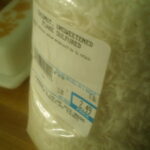When traveling to the Philippines, a sweet-toothed tourist can find it a blissful experience to try this tropical country’s most popular cold desserts. The tasty treats a foreigner can check out vary from one part of the archipelago to another. Yet there are essential ones that are available in most places, especially in the country’s most sought-after tourist destinations. These are often made available in local restaurants and the streets. They are also regular attractions in feasts and celebrations in Filipino homes and party venues. Milk, sugar, coconut, and other varieties of tropical fruits are typical ingredients used in these must-try desserts.
Leche Flan
Leche flan is a form of caramel custard made from egg yolks, milk, and caramelized sugar. A little vanilla or citrus extract is usually added to the mix for more flavor. After producing caramel in a heated llanera (an oblong-shaped molding container), the egg yolk and milk mixture is placed over it, then aluminum foil is used to cover the container. The mixture is steamed for about half an hour. After cooling down, it is placed in a refrigerator using the same llanera where it was cooked.
The leche flan is served in a small plate by slicing a piece from its original container. Then, the sweet brown caramel starts oozing from below the llanera and a spoonful or even more is placed onto the serving. This dessert offering’s rich texture and distinctively saccharine taste, as well as its inexpensive ingredients, convenient preparation, and long shelf life, add to its popularity both in Filipino homes and restaurants.
Halo-Halo
Halo-halo is a mixture of fresh, boiled, and sweetened fruits, beans, and tapioca pearls, gulaman (cubed jelly), and pinipig (crushed, pounded, and roasted rice puffs) in the bottom of a tall glass or a large bowl, then shaved ice fills the rest of the container. Fruits and other delicacies often found in the many varieties of halo-halo include kaong (sugar palm fruit), macapuno (sweetened coconut shreds), sweet potato, sweet corn, banana, jackfruit, and nata de coco. Some also add coconut milk to the mix.
The serving is topped with evaporated milk, spoonfuls of ube (purple yam) and leche flan, and a scoop of ice cream. Although served any time of the year, this dessert becomes most popular during hot summer days. People enjoy its cold taste, while savoring its fine mix of sweet ingredients.
Buko Pandan
Buko pandan is a combination of pandan-flavored jelly, grated or sliced buko (young coconut meat), all-purpose cream, and sweetened milk. The juice coming from boiled pandan leaves is used in making the green jelly, then it is typically diced to a similar size as diced cheese in a salad. Buko-pandan flavoring, which is often available in local stores, can serve as an alternative to pandan leaves. A few drops included in the jelly mix is used, and this bypasses the boiling process required for the pandan leaves.
After allowing the combined ingredients to thicken by chilling it in the refrigerator for a few hours, it is served in a small dish or cup as is or with a scoop of ice cream on top. Many variations of buko pandan also add nata de coco, kaong, and tapioca pearls into the mix. Easy to prepare and incredibly satisfying, this chilled dessert is famed for its creamy flavor and its well-defined taste of native buko and pandan.




